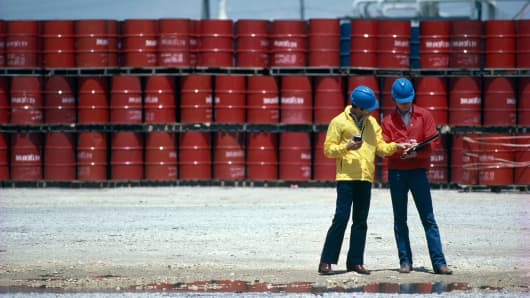Morgan Stanley has downgraded its outlook for oil prices, expecting low prices to persist for longer than previously thought as the supply and demand imbalance looks set to continue for at least another two years.
The bank lowered its average 2016 Brent price forecast to $30 per barrel, down from $49 previously. Morgan Stanley now expects an average price of $40 per barrel in 2017 as oversupply persists, before climbing past $50 by the end the year to average $70 by 2018.
“To rebalance the market, we maintain that demand must ‘catch up’ to supply, as production is unlikely to retrench materially. The challenge is that demand growth is slowing. When combined with seasonality and lagged data, confirmation of large draws and rebalancing now may not be apparent until mid-2017 in our base case,” said analysts led by Andrew Sheets at the group.
Sheets said any recovery will need to be a “three step” process, where an oversupplied market needs to rebalance by cutting production and increasing demand, working off high oil inventories and allowing producer hedging to run its course.
Oil extended a rally above $35 a barrel on Thursday, adding to the previous session’s 7 percent jump, as support from a weaker dollar offset concern about over supply and record-high U.S. inventories.
Crude bounced from an earlier decline after comments from an Iranian official suggesting Tehran supported a meeting between the oil-producing cartel OPEC and other producers raised hopes — despite much skepticism in the market — that they could take action to support prices.
Brent crude was up 62 cents at $35.68 a barrel in afternoon trading Thursday. Prices have gained over 30 percent since falling to $27.10, the lowest since November 2003, on January 20th. U.S. crude was up $1.11 cents to $33.41.
Looking at the impact low oil prices will have on other asset classes, Morgan Stanley expects further weakness in the oil producer currencies, specifically the Canadian dollar and the Norwegian crown. Exporters of other commodities should generally move in line, including the Australian and New Zealand dollars.
With Brent averaging $30 in 2016, Russia will have to choose between the depletion of their sovereign wealth oil fund, or a 3–3.5 percent contraction in the economy this year, analysts at the bank said.



